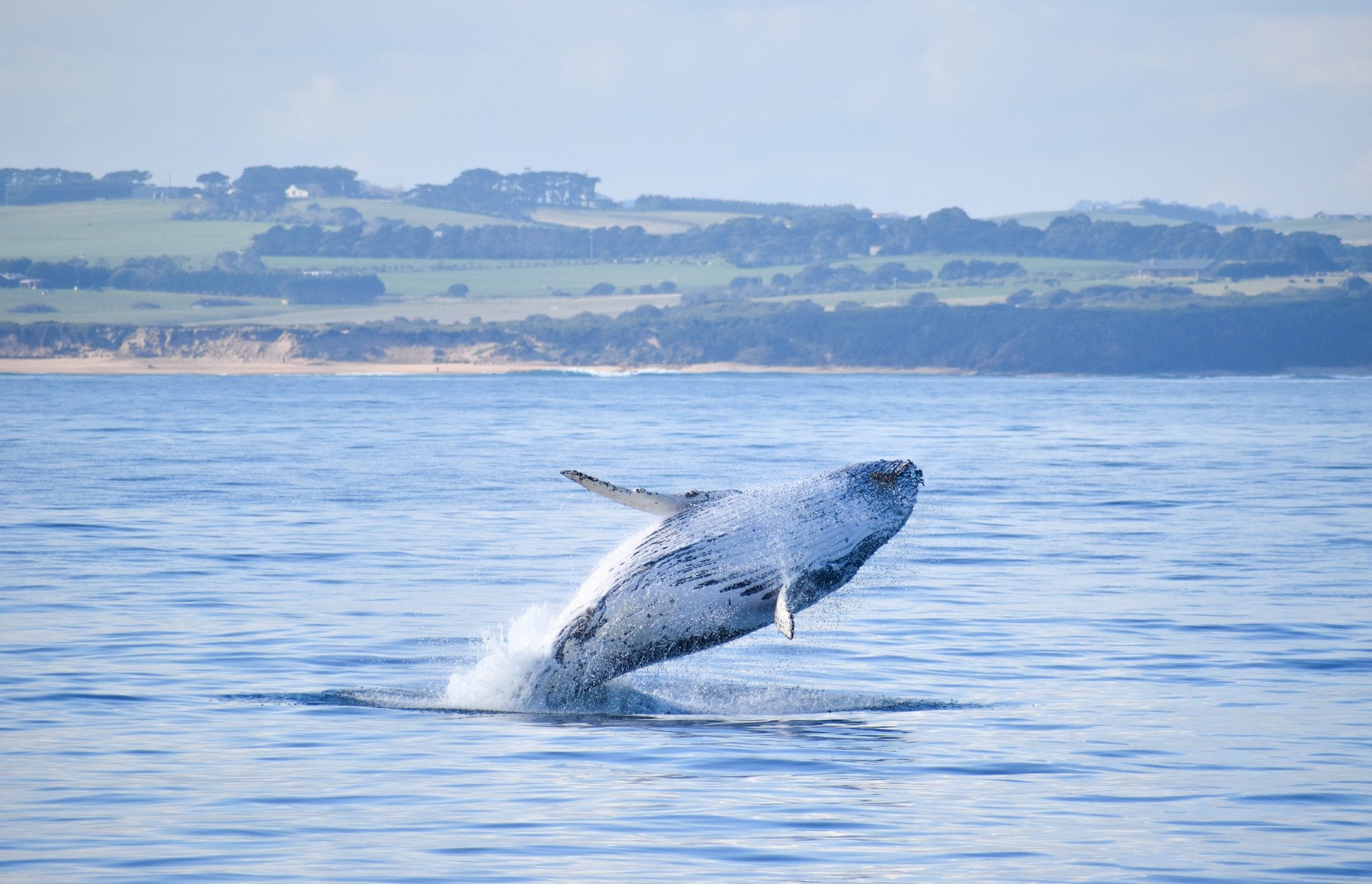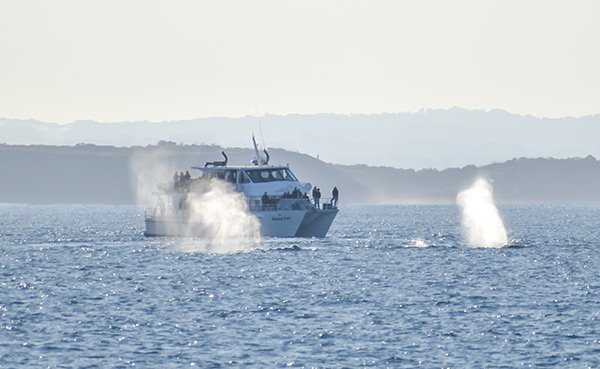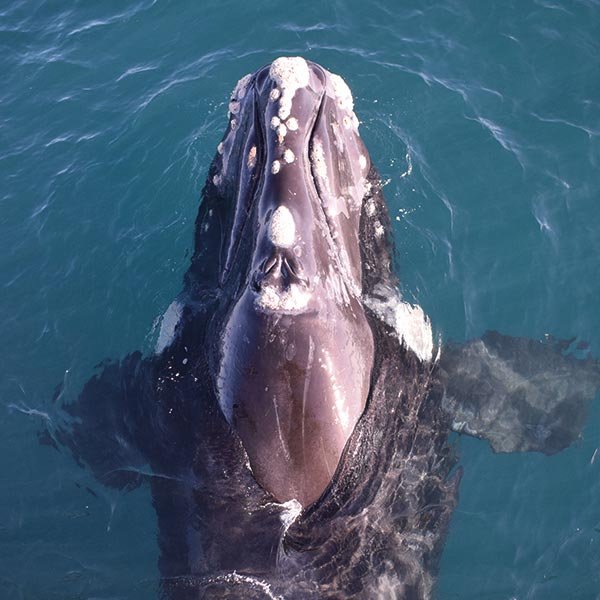🐋 Whale Season
We see several species of whales from May to October, humpback whales and southern right whales can be seen along the Victorian coastline.
🐋 Where to See Whales
Have a look at the Bass Coast Whale Discovery Trail below for good vantage points to spot whales from. Remember to look after the coastal environment by watching out for wildlife on the roads, and by keeping to the tracks.
🐋 Wear the Right Gear
The best place for whale watching is outdoors on land or boat tour. To maximize your comfort while whale watching, we strongly recommend dressing in warm layers and take a waterproof jacket. The whales will come out rain or shine, and recommend being prepared for any type of weather. You can always spend time in a cafe to enjoy a hot beverage to warm up!
🐋 Have Your Camera Ready!
Whether you are an expert photographer or an iPhone amateur, you are sure to get some great shots from the boat. To ensure you get the best whale photos, make sure to have your camera in hand and fully charged. If you are on your phone, we always recommend setting it to video mode to be able to catch the whales surfacing, breathing, diving, or breaching.
🐋 Take Some Time Away From the Lens
Step back from your viewfinder at least once to take in the wildlife and just enjoy it. With the clifftop views, the large open expansive of the ocean, and the abundant wildlife you will be viewing, it is impossible to take it all in without using all of your senses. It’s important to put the camera down for a bit to thoroughly appreciate the experience.










